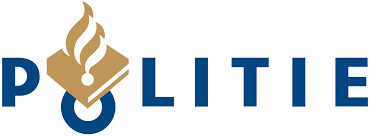What are right questions to ask employees? And how do you get more insight from the participants’ answers? How and why did they come to their choice? What is the real underlying story? Or does that linger under the surface?
The right questions will lead to a successful round of questions
Asking the right questions sounds simple, but it’s not. Countless surveys you have ever distributed as an organization show this. The response rate is low, the answers hardly give the desired results and the frustrations of employees only increase because they have the feeling that ‘nothing is being done’ with their response.
Therefore, we won’t use the word survey. We talk about challenging, listening to each other, working together, where the approach is to engage in a conversation with each other. In question rounds, the right questions are critical to making a question round successful. By successful we mean; whether the outcomes lead to solutions that contribute to the purpose of the questions.
Coming up with questions is difficult
We found that many organizations struggle with asking the right questions. To this end, we conducted research in recent years at dozens of organizations with many tens of thousands of employees, examined studies and designed 100s of questions. We asked them how they are doing, what could be improved or even what needs to be improved.
The 2nd unique round of CircleLytics is used to challenge and inspire each other to think deeper about the questions presented. Organizations such as Fivoor, Inspectorate for Health Care and Youth, Movisie, Unilever, Municipality of Utrecht, HR Community, RSM (global) and several others engaged in a dialogue with employees and their network in this way.
In recent months, dozens of organizations have surveyed 10,000 employees about how they are doing, and what could or should be improved, including what work can be done at home, or not, and why? How much of the work should be done at home, how much at the office? What do employees want, what do they demand? How much room does the labour market allow for not meeting the employees’ demands or wishes? Will employees continue to have the same wishes and demands when it comes to working at home or in the office? What if this changes? What is the influence of the government and social developments when it comes to choices regarding working at home or at the office?
Together with several client organizations, we designed questions, did research and read studies. As a result, we designed top-notch dialogue questions for you and your organizations. You can use these unchanged, enrich them or you can make a selection.
People, society and organizations are currently facing unprecedented circumstances. Insecurities regarding health, finances, jobs and a future for you and your environment go hand in hand. In addition, home and office work must be combined and that in itself is complex enough without corona . Societies and countries are also under pressure to keep their heads above water, to be accountable to parliament and citizens and to ensure that healthcare is or will be up to standard, to offer confidence to all. And then there is the labour market, accessibility of offices, cost of office space versus working from home, etc. Organizations are already making different choices, like Lloyd’s and Goldman Sachs do in this article.
In this sense, we are part of a great experiment in which many people and agencies have opinions, point to each other and are constantly confronted with new, mostly uncertain information. Uncertainty and forms of social isolation can lead to stress and mental problems that transcend normal absenteeism. This can result in a serious loss of confidence, commitment and productivity.
CircleLytics has developed top-notch questions that allow the leadership of the organization, HR, the works council and all employees together to determine what is going well, and what can or must be improved. Contrary to the various corona surveys, the CircleLytics questions reveal the scores: why and how employees think about ‘how to do better’. This provides deeper insights into how to make sound decisions compared to using scores from an old-fashioned survey. It also results in collaboration: employees learn from each other and listen to each other. Something that is desperately needed in these times of little social interaction.
People need trust and connection. You increase this by taking them seriously, showing them that their opinions matter and connecting them in the 2nd round.
We designed a set of questions for dialogues with managers and a set for dialogues with employees. These questions are incorporated into CircleLytics and can be used immediately. We recommend that you don’t limit the dialogue with your people to just one because conditions, markets and uncertainties are constantly changing. You can enrich the questions with matters that apply specifically to you.
An example question:
“To what extent is information from leadership clear and available to you?”
Enrich this question with, for example, the following:
“And please indicate what improvement you see for a higher score next time.”
Or:
“And please explain your score with a recent, clear and telling example.”
Another example question:
“What is the biggest challenge in leading your team when you work from home?”
Enrich this question with, for example, the following:
“Describe a situation that other executives can learn from the most.”
or you can give even more direction to the participant:
“In answering this question, don’t focus on video conferencing/IT but on the social side of your work.”
The first round of questions will generate scores and quality answers. These serve as input for the second round of questions in the Circlelytics dialogue. This is how we challenge participants to think more deeply about the questions presented earlier. They learn from each other and listen to each other. This brings about collaboration and creates support for final decisions. A dialogue emerges and the power of an organization’s collective intelligence now comes to the fore.
Ask it!
Ask managers and employees the right questions, show that their opinion matters and connect them in the second round of questions, so that you can respond as an organization to the real needs that are felt by employees. The right questions help management, Human Resources, the works council and all employees to gain more insight into what is already going well, what can be improved and what really needs to change. And make sure you repeat these rounds of questions regularly, because circumstances are constantly changing.
Looking for more information on these dialogues for your employees and/or managers and are you ready increase your insight immediately? Then email us and start your Proof-of-Concept today.







